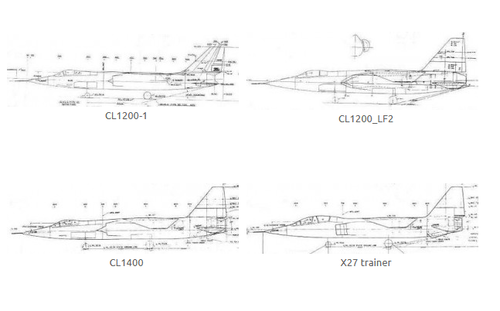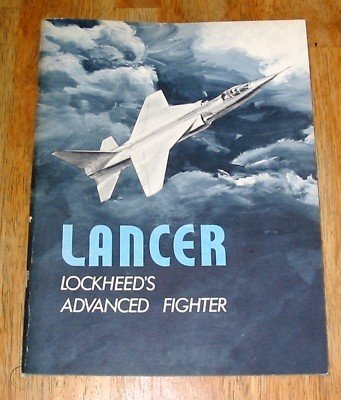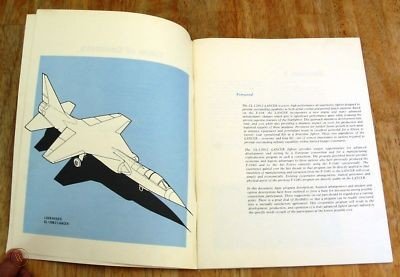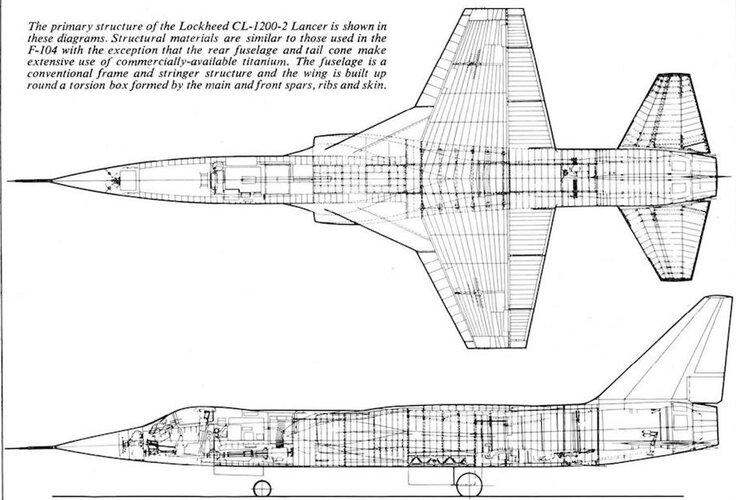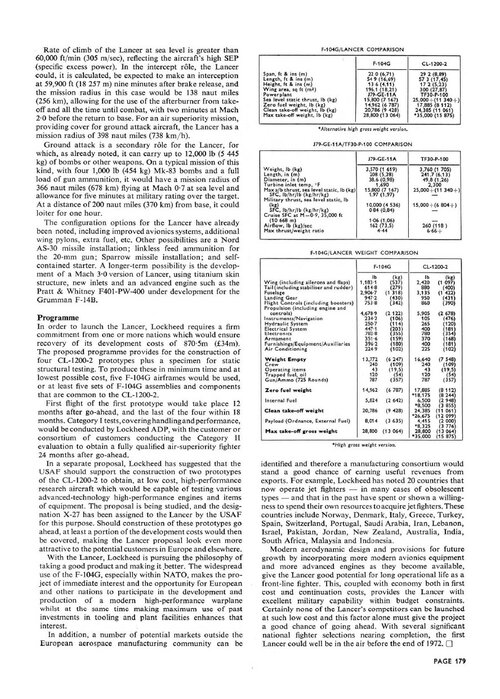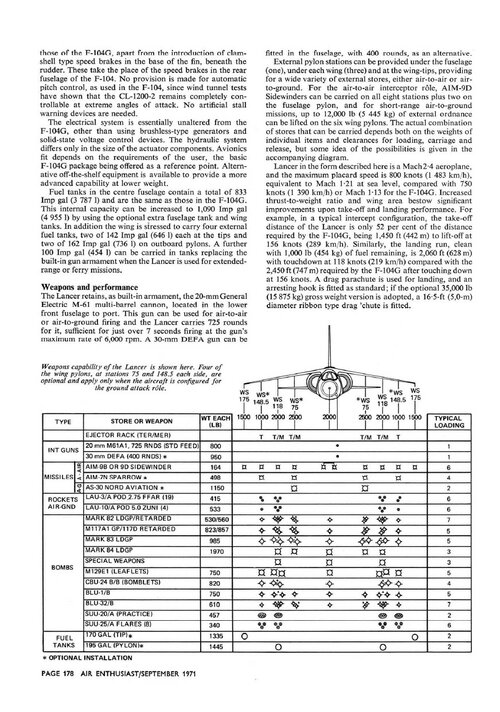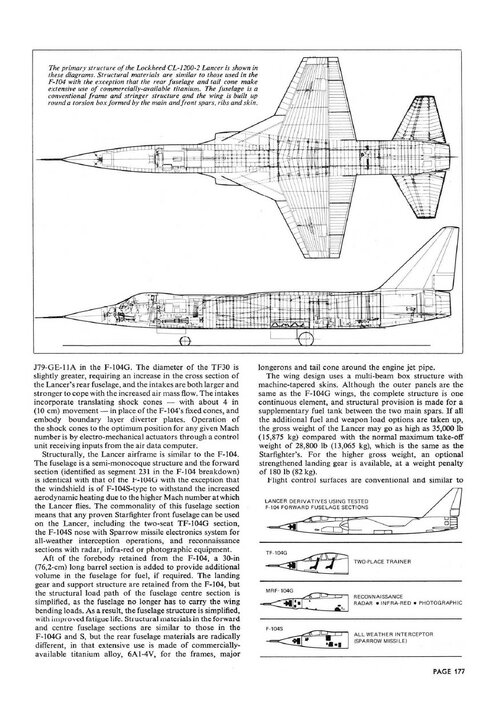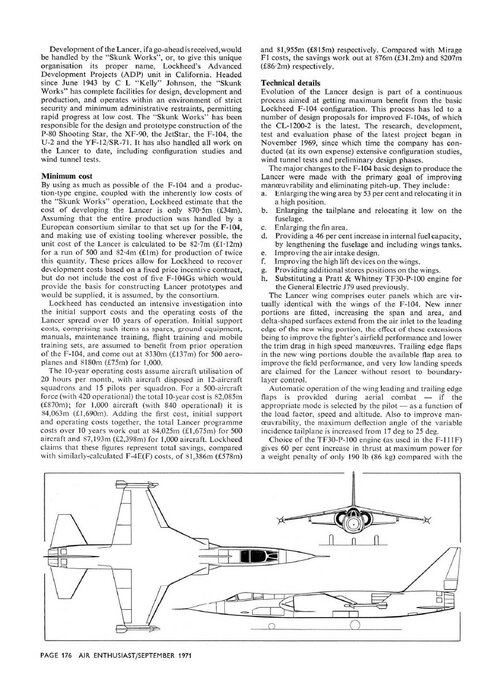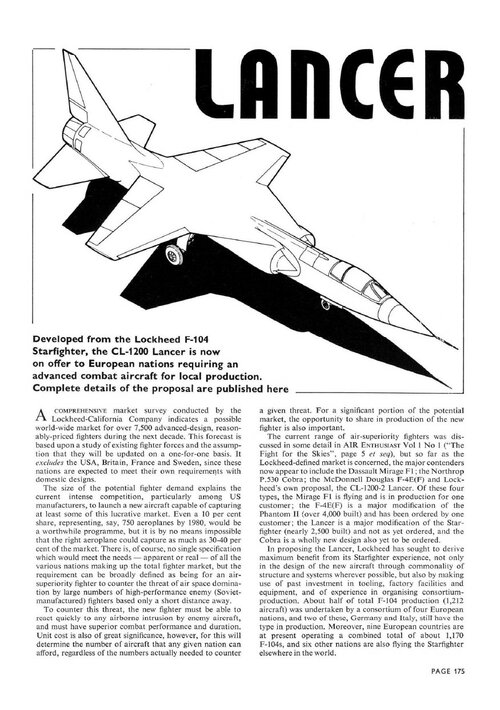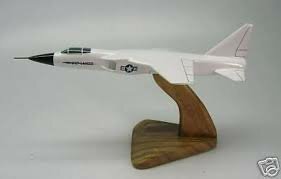As a follow-on airplane to the F-104 for our European allies, Lockheed developed a very practical and productive proposal. Use the expensive, proven components and systems from the F-104 but add a larger wing and new tail and increase the power for an all-around fighter. The new design promised to outmaneuver all other aircraft known to be flying including the MiG-21. We called the airplane the “Lancer.”
It was proposed with a choice of engines, the familiar GE model or a new advanced-technology design from Pratt & Whitney with a Mach 2.5 speed. We proposed to conduct development and initial flight tests at the Skunk Works in cooperation with the European engineers, and that production of the plane be programmed entirely in Europe. It could have meant millions of dollars saved in production costs as well as jobs for many thousands of people in the plants where they had turned out the F-104.
The international competition among manufacturers for sale of a new airplane to the NATO countries was intense. France’s Dassault proposed an advanced version of its Mirage F-1.
Two other U.S. manufacturers were after the business. McDonnell-Douglas offered a modification of its twin-engine Phantom, to be designated F-4F. Northrop proposed a totally new design, P-530 (F-5), which would not have been available until 1976. Lockheed promised the Lancer for service in 1973. By that year, no decision had yet been reached, and we still were trying to sell the Lancer overseas. The airplane was not proposed to the USAF, which was interested in developing a new aircraft.
As a sidelight on international sales of aircraft, on the very day that we started touring Europe with our proposals for the Lancer, one of our competitors set out on the same circuit to sell theirs. Months later we discovered that both of us had retained the same overseas marketing consultant. He was being paid by both sides.
The Air Force in this country was considering development of two new fighters, the F-14 and F-15.
Back in 1969, I questioned publicly whether these aircraft actually would be competitive with the best Russian fighters. Specifically, I said that I thought the cost of the proposed F-15 would be more expensive than necessary, that a smaller, less-expensive airplane could do the job, just as well.
Stuart Symington, former Secretary of the Air Force, then Senator from Missouri, very much wanted that F-15 contract for his state. He called in Dan Haughton, then Lockheed board chairman, and me and announced that whether we liked it or not that contract for the F-15 would be awarded to McDonnell. Kelly Johnson was not to give any more argument. Haughton was under the gun and promised that he’d see that I didn’t. I did not promise in my own right.
We, Lockheed, had made an unsolicited proposal to the USAF for an advanced, highly-maneuverable lightweight fighter that we could have had flying within a year at absolute minimum cost. We had lined up a dozen of our vendors with whom we were then working on another project, including Pratt & Whitney for the jet engines, other suppliers for armament, gunsights, wheels, tires—the whole package. It was a darn good airplane. The X-27, later designated X-29, was basically a new airplane, but it utilized the nose design of the F-104 which by that time had fired millions of rounds of ammunition. We even proposed firing tests on the first flight to prove we had a fighting airplane.
David Packard, then Deputy Defense Secretary, was very much impressed with the proposal. But Robert Seamans, Jr., Air Force Secretary, did not like the idea of buying a fighter in that manner. He preferred the conventional method—an experimental model first, production plans later.
I disagreed with the USAF on procurement policy.
“This airplane is not so advanced that you cannot develop the ‘X,’ the experimental airplane, into a production prototype,” I argued. “I don’t want to draw a line on paper that does not consider production. Why go to double prototyping?”
We came close to receiving a contract for that airplane, but what eventually killed any prospect for our producing the lightweight fighter were the financial problems that Lockheed encountered in 1971—first, losses from several fixed-price contracts for the U.S. military, then the threatened loss of the company’s new L-1011 commercial transport program with the unexpected bankruptcy of Great Britain’s Rolls-Royce, manufacturer of the engine. The very future of Lockheed was in question, and the Air Force reasoned understandably that they should not risk awarding the contract to the company.
Our proposal did, I believe, result in the USAF’s eventual design competition for a lightweight fighter. The plane they got at least ten years later, after double prototyping by General Dynamics and at nearly three times the cost, was comparable in performance. That was the F-16.
If the military would spend one or two percent of the cost of developing an experimental airplane in planning production at the same time, it would come back in savings many, many times over.


